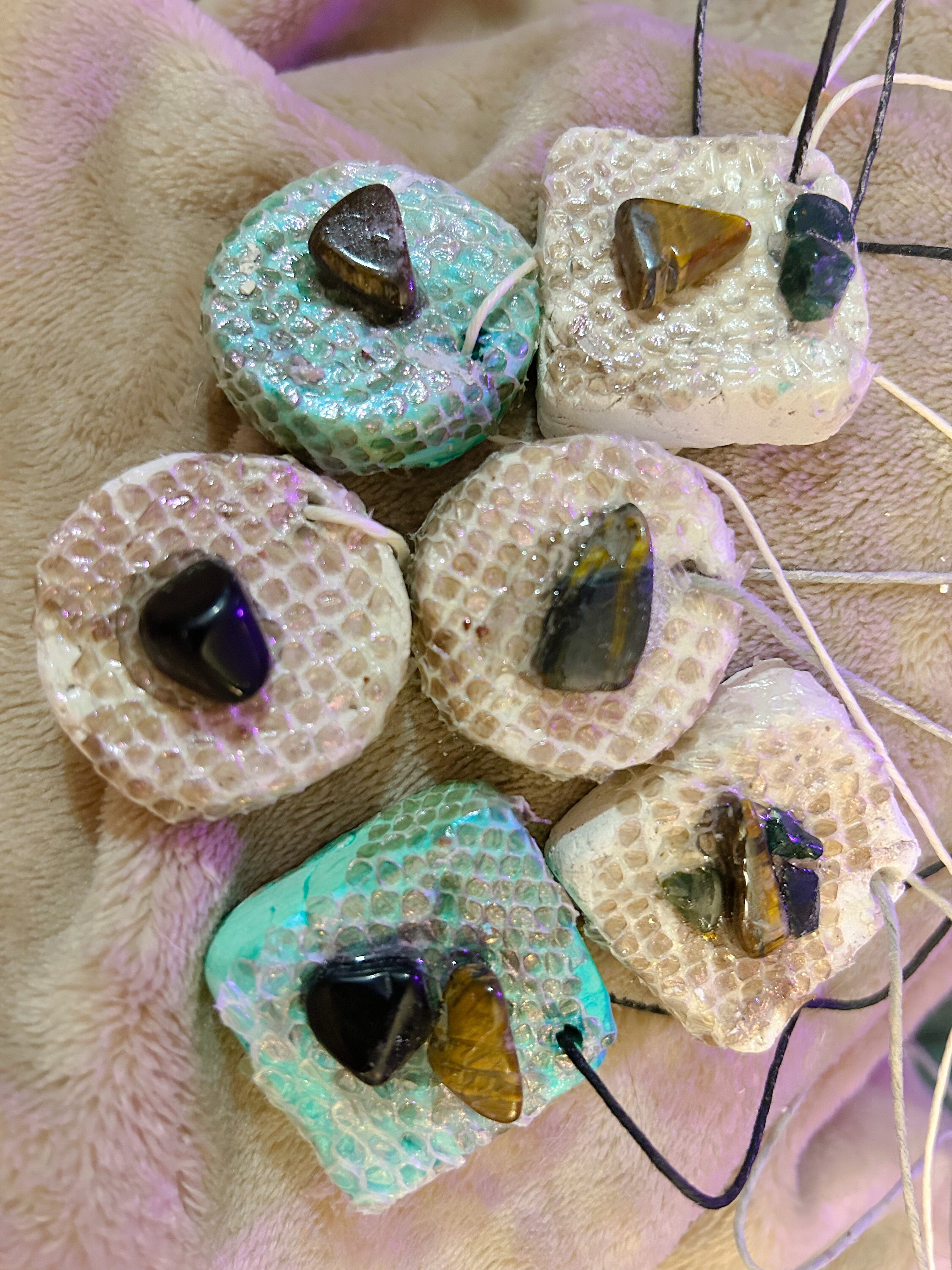Lately, I've been fully immersed in an exciting and meaningful project—my Serpent's Shield Talismans. These special pieces are carefully handcrafted from clay and then rolled in red brick dust and black salt for added protection. Each one is wrapped in the shed skin of my cherished python, Wadjet, named after the Egyptian Goddess of Protection. To enhance their power, I incorporated bloodstone, tiger's eye, and obsidian. The process of creating these talismans brought me so much joy, even more than my usual work. Working with clay felt raw and primal, and there's something incredibly powerful about shaping something from the earth itself. While I’m not a sculptor, I believe talismans aren’t about perfection—they’re about the energy poured into them.
The history of talismans dates back to ancient civilizations, where they were widely believed to hold magical or protective powers. The word "talisman" itself originates from the Greek word telesma, meaning “completion” or “initiation,” referring to an object that was ritually consecrated or imbued with special powers. Talismans were used in a variety of cultures, including ancient Egypt, Greece, Rome, and the Islamic world, and they often took the form of amulets, rings, or engraved stones. In ancient Egypt, for example, scarabs and other symbols were thought to bring good fortune and ward off evil.
Throughout history, talismans have been associated with various superstitions, religious beliefs, and the occult. In the Middle Ages, they were commonly used by alchemists and mystics who believed that certain objects could influence spiritual or physical outcomes. In Renaissance Europe, interest in talismans grew as part of the broader revival of astrology, Hermeticism, and magical practices. Talismans were thought to be capable of protecting their owners from harm, bringing wealth, or even granting special abilities through the influence of celestial forces.
The design of talismans often incorporated sacred symbols, astrology, and numerology, with careful attention paid to the alignment of planets and stars at the time of their creation. By the 18th and 19th centuries, the use of talismans began to wane in favor of more scientific and rational views, though they remained prevalent in folk traditions and among those who practiced spiritualism or occultism.
Today, talismans are still used by people who believe in their metaphysical properties, with some associating them with good luck, love, or personal empowerment. While their cultural significance has evolved, talismans continue to be a symbol of the connection between humans and the mysterious forces believed to influence their lives.
